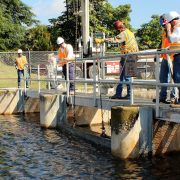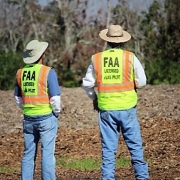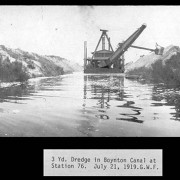Hurricane Season Is Almost Here!
Florida’s hurricane season begins on June 1 and ends November 30. Based on historical weather records dating back to the 1950s, a typical season will average 12 tropical storms with sustained winds of at least 39 miles per hour, of which six may turn into hurricanes with winds of 74 miles per hour or more. In addition to high winds, hurricanes and tropical storms can bring torrential rainfall. These severe weather events can produce localized flooding that can be exacerbated by improperly maintained drainage systems.
Residential communities and businesses can help mitigate the impacts of severe storms with a few simple steps. One of the most important steps is the regular inspection and maintenance of drainage infrastructure. Drainage infrastructure can include inlets, discharge control structures, connecting pipes, and ponds. Proper maintenance of these facilities will ensure the unobstructed flow of stormwater and fully operational equipment.
Secondly, residential communities and businesses with operable discharge control structures can request authorization from the Lake Worth Drainage District (LWDD) to open these structures prior to the storm. Lowering pond levels provides additional storage for excess stormwater.
LWDD recommends establishing a Drainage Committee whose role is to provide for the maintenance and operation of the community or business’s drainage system. Drainage Committees may consist of board members, residents, and/or property managers. All members of the Drainage Committee should register with LWDD on its website at www.lwdd.net. This registration process ensures LWDD water managers know who to contact and where to send important weather alerts and instructions.
While weather predictions are becoming more sophisticated, forecasters are still unable to predict exactly where a storm will make landfall. The likelihood of flooding depends on several variables such as rainfall volume, ground moisture, and local terrain. No system, no matter how well designed, is 100% flood-proof. However, good maintenance practices are the first step to protecting you from potential flooding. Find more information about community flood control on our website https://lwddnet.wpengine.com/property-managers-hoa.







